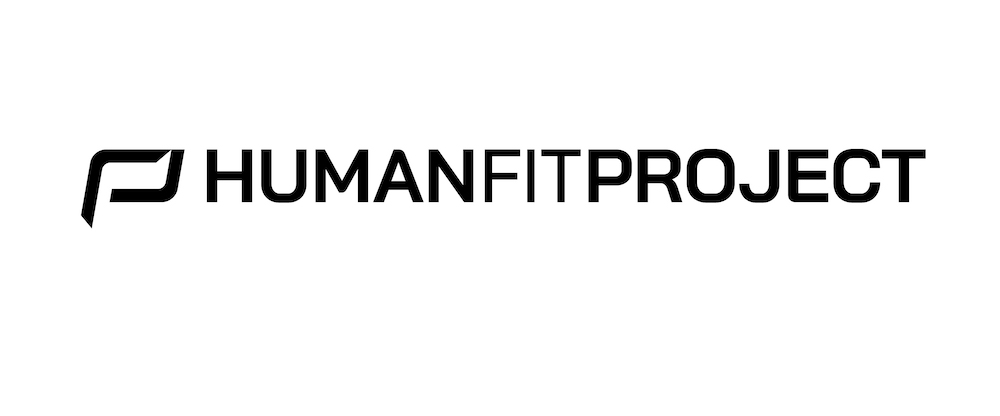A successful body transformation goes beyond eating less and losing weight.
In fact, changing your body combines several different methods, that when used appropriately can help you maintain your fat loss efforts and assist you in transitioning to a healthy lifestyle for the rest of your life – instead of an intense season of deprivation, only to return to bad habits once the diet is over.
Rapid fire approaches like 20 pounds in 20 days are dangled in front of your lingering eyeballs making it hard to see past the non-sense. The fact that you live in a instant society doesn’t help you either.
These types of promises may work. You’ll drop some weight fast, but the back-end of these methods is where you’ll pay up.
After you’ve dragged yourself through the mud by eating as much as newborn kitten or cleansing with a water, lemon and cayenne pepper detox for several weeks, you slap the weight back on and return to the behaviors that got you into the mess in the first place.
With no intervention, you run the risk of losing the same 12 pounds over and over again without looking any different.
It’s time to break that cycle.
The normative approach to burning fat to count calories. Obesity researchers, trainers and health coaches often see a plate of food as proteins, carbs and fats that add up to a total energy value (calories).
But there’s more to this story. Food is more than just calories. The food you eat (or don’t eat) activate genetic switches and trigger bodywide reactions. These reactions are where metabolic upshifts or downshifts happen, thus affecting your ability to burn fat.
The typical question is “How many calories (or grams of a macronutrient) does this meal or food item have?” But it’s important to take this question further and ask yourself, “What are different foods doing in my body – aside from providing energy – that make a calorie deficit induce or hinder fat loss?”
In addition to diving deeper into how food plays a larger role in your fat loss beyond providing energy, you must take into account how your lifestyle impacts your fat loss efforts too. Things like sleep quality, stress management and monitoring food cravings all play a critical, but often overlooked aspect of fat loss.
It’s time to unleash your full-fat burning potential. To do so, I’ve complied a practical but effective list of lifestyle tweaks that will help you do just that.
Shake it up before you eat
Protein is well known for it’s role in muscle building. But, a powerful benefit that doesn’t get as much limelight is it’s ability to impact hormones that assist in fat loss. Eating protein leads to the release of glucagon, a hormone that helps shuttle fat out of your fat cells so it can be burned up by your muscles.
A simple and effective way to boost your fat burning capacity is to have a protein shake before each meal.
Researchers who conducted a study on this concept found that those who consumed just 10g of whey protein before breakfast and dinner lost more fat than those who had a controlled beverage with the similar amount of calories but with less protein over a 12 week period.
The results weren’t small either. The group who had the protein shake with at least 10g of protein lost 73% more fat than the control group.
In addition to boosting glucagon, there are a few other reasons why this simple strategy can help you burn fat fast – similar to ice melting on the sun.
First, by having protein consistency in your meals it moves the dial on the hormone ghrelin – which regulates appetite – downward. Meaning, it helps you feel sated faster and helps control the over-eating at mealtime.
Secondly, protein has the highest thermic effect of food, or TEF, than any other macronutrient. In other words, your body uses about twice as much energy to absorb and digest protein as it does with fats and carbohydrates. Thus, by including protein before and at each meal, you’ll be boosting your metabolism during digestion all day long.
Banish cravings
Hunger is driven from the stomach, but cravings are controlled by the brain.
Cravings are most ravenous when you’ve allowed your blood sugar levels to dip so low that you turn into a savage – looking for anything to consume with abandon. The more subtle culprit is found in nutrient deficiency.
When you aren’t getting enough chromium, magnesium and B vitamins that all play a critical role in energy production, cravings tend to sprout up. For example, when you’re not getting enough magnesium, chocolate cravings dominate your thoughts. A chromium and vitamin B deficiency will induce cravings for carb heavy foods.
The commonplace approach is to make sure your diet is made up of a wide variety of fruits, veggies, protein and high quality fats. The normative advice.
However, unless you have a live-in, full time chef or you’re a food blogger for a living, eating perfectly 100% of the time isn’t in the cards. You need a practical strategy to monitor food cravings.
Supplementing with glutamine is a practical, natural solution to controlling food cravings.
When your brain is low or absent of fuel (glucose) it sends a message to that you need to replenish energy stores. This pull is what you feel as a craving.
You can reach for that old doughnut in the office break room. Or, you can manage the craving in the same amount of time with one amino acid supplement – glutamine.
Glutamine reaches the starving brain within minutes and can often immediately put a halt on powerful cravings for sugary carbohydrates. The reason why this works is because the brain is fueled by glutamine. In fact, this method has proven to be so powerful that it’s used for drug and alcohol therapy.
Take 1 to 2 grams of glutamine before a meal. If you find yourself constantly craving sugary carbohydrates, taking glutamine in the morning and mid-day can help curb cravings throughout the day. By getting a handle on your cravings, you’ll avoid the mindless margins of snacking that over weeks and months add up in total intake.
Gains while you sleep
Thankfully, the lore of eating at night making you fat is losing it’s power. In fact, the opposite can be true, given that you optimize your intake before you go to sleep. Professor Luc van Loon of Maastricht University in the Netherlands conducted a study on the impact of protein consumption at night.
His finding revealed that protein digestion and absorption function normally while you sleep. Furthermore, he also found that people who drank a protein rich shake before bed induced a 22% increase in their protein synthesis during their slumber.
While sleep is commonly known for rest, it’s also an optimized environment for muscle building when you take down 20-30g of protein before you hit the sack.
How does this help fat loss and body composition?
The more muscle you have, the more calories you burn.
All organs in your body regularly perform maintenance on themselves. The consistent demolition and rebuilding process of cells burns calories. Your muscles work in the same fashion.
In order to maintain themselves, they must break down regularly and build back up with new proteins. As a result, even just one pound of muscle can burn up to 50 extra calories – even while you’re at rest. This may seem minuscule, but remember this extra calorie burn to due the addition of lean muscle mass is a continuous. Thus, over weeks and months the more muscle you add the more calories you burn and consequentially, the better your body looks.
Optimize your workflow
We aren’t designed to run like machines – at lightning speed, continuously with no built in renewal.
But the workplace environment usually expects you to produce like a high-powered robot with boundless endurance and no requirement of rest.
On top of this, building in renewal into your work day is frowned upon. Things like “you can sleep when you’re dead,” echo through the corridors of the workplace putting a choking pressure on everyone to produce.
The result of this environment?
A linear chase down a path to burnout. Without a strategic renewal plan built into your work day, chronic stress begins its insidious invasion. For a week or even a few months, you’ll get by. The coffee’s will get bigger. The nights will get longer. But you’ll get by.
But eventually you’ll redline. If you’re fine with that and dealing with the collateral damage, then run that course.
However, if you can see the iceberg ahead and you want to steer clear of crashing into it, here are a few practical ways to mange your workflow and manage stress in a productive way.
Our basic rest activity cycle follows a ninety minute period which cycles throughout the night during the five stages of sleep. In other words, we move from light sleep to deep sleep throughout the night.
During the day, we also need to oscillate in the same rhythm. But our daily behaviors show that we fight through the hours in a painful, slow, tooth-pulling manner. Instead of that fashion, it’s wise to shift your work to be completed in short burst instead of long laborious hours.
Research shows that working in ninety minute intervals is optimal for consistent high quality work without burnout. Instead of looking at an eight hour day in one big chunk, view it as a series of ninety minute intervals with built in renewal between each session.
The breaks you take can be anything you like. Talking a walk outside, reading a novel, having a coffee on your porch, stepping out to meditate for five minutes, phoning a friend. The key is that you break from intensive task to give your brain breathing room – this way it can return to work focused and refreshed.
The key benefit here is managing stress. The burden of marching through an eight, 10, or 12 hour day with no built in renewal leaves the door open for chronic stress to creep in.
When this happens cortisol levels also stay chronically high. Then, the cascade of side-effects kick in. Fat gain around the belly, difficulty sleeping at night, reduced ability to recover from workouts inflammation, day time fatigue, caffeine dependency and adrenal fatigue are all real possibilities.
Obviously, all of those things go against your fat loss goal. Make the simple switch to work in rhythms – ninety minute intervals of focused work followed by a short renewal.
Wrapping up
Having an exercising routine and following a healthy diet are things you already know.
But, I’ve learned over the years that it’s in the margins of life where people get stuck. By taking the strategies we just went over and plugging them into your fat loss game plan, you’ll be patching up the holes in your approach.
There’s more to fat loss than just food.
By optimizing how you eat each meal, manage cravings, taking advantage of sleep and remodeling your workflow to control stress you’ll be taking your fat loss progress by the horns.
You now have significantly more control over your progress instead of sitting in frustration and wondering why the deficit you’re in isn’t working.
You have the power and the strategies now. Follow through.
References:
“Effect of a High-protein Breakfast on the Postprandial Ghrelin Response. – PubMed – NCBI.”National Center for Biotechnology Information. N.p., n.d. Web. 2 Jan. 2016.
“Protein Ingestion Before Sleep Improves Postexercise Overnight Recovery. – PubMed – NCBI.” National Center for Biotechnology Information. N.p., n.d. Web. 2 Jan. 2016.
Ross, Julia. The Diet Cure. Ringwood: Penguin, 2000. Print.
Schwartz, Tony, Jean Gomes, Catherine McCarthy, and Tony Schwartz. Be Excellent at Anything: The Four Keys to Transforming the Way We Work and Live. New York: Free Press, 2011. Print.
 About the Author: Brian McFadden
About the Author: Brian McFadden
Brian cringes at advice that makes things harder then they need to be. He is a full time writer and men’s fitness coach who focuses on behavior change, habit development and process improvement.
Brian is a contributing editor to TigerFitness.com—you can follow him on Twitter and Instagram







